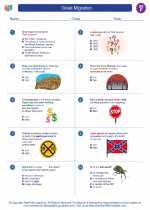Indus Valley Civilization
Overview
The Indus Valley Civilization was an ancient civilization that thrived in the Indus River Valley, in present-day Pakistan and northwest India, from about 3300 to 1300 BCE.
Geography
The civilization was located in the fertile plains of the Indus River and its tributaries. It had a well-planned urban layout with advanced drainage and water supply systems.
Social Structure
The society was organized into distinct social classes, with a ruling elite at the top, followed by merchants, artisans, and laborers. There is evidence of a high level of urban planning and organization.
Trade and Economy
The Indus Valley people engaged in long-distance trade with Mesopotamia, ancient Egypt, and Afghanistan. They were skilled in metallurgy, pottery, and bead-making, and traded in a variety of goods.
Religion and Culture
The civilization had a complex religious and cultural system, as evidenced by the presence of seals with images of deities and animals, as well as evidence of ritual bathing and worship.
Decline
The civilization declined around 1300 BCE, possibly due to environmental factors such as tectonic activity and changes in the course of the Indus River, as well as possible invasions or internal conflicts.
Study Tips
- Memorize the major cities of the civilization, such as Harappa and Mohenjo-Daro.
- Understand the significance of the civilization's advanced urban planning and water management systems.
- Explore the trade networks and economic activities of the civilization.
- Study the religious and cultural artifacts and practices of the Indus Valley people.
- Examine the theories about the decline of the civilization and form your own opinion.
[Indus Valley Civilization] Related Worksheets and Study Guides:
.◂Social Studies Worksheets and Study Guides Sixth Grade. Great Migration

 Worksheet/Answer key
Worksheet/Answer key
 Worksheet/Answer key
Worksheet/Answer key
 Worksheet/Answer key
Worksheet/Answer key
